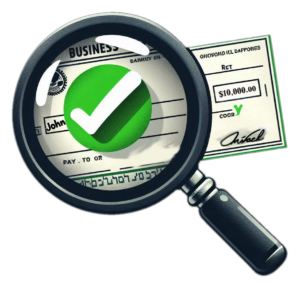How Automated Check Image Analysis Works

Examining checks manually takes a lot of time and effort, but thanks to automated check image analysis, you no longer have to worry about that wasted time or money. Wondering how it works? Here’s a look at the process.
Reading the Magnetic Ink
As you know, most checks use magnetic ink, and check analysis software immediately picks up on those characters. Whether a check has been deposited in an ATM or a smartphone with check reading capabilities, this process hones in on the account that drafted the check. Armed with those numbers, the program knows which bank to contact to complete the transaction.
Deciphering Handwritten Elements
However, check image analysis software doesn’t just read the magnetic printed characters. It can also read hand written data such as payee name, date, and CAR/LAR. Now more than ever checks are scanned outside of the bank using remote deposit capture (RDC) and smartphones, therefore the scans and quality of the scans are not under the bank’s control.
Because of this, there is software available that can clean up the image by removing lines and speckles, lightning and darkening the image, as well as deskewing the image to help with the analysis of the data on the check. To illustrate, imagine someone deposits a check into an ATM. The primary software can’t read the numbers written on the check so a secondary set off software comes in, cleans up the lines, and makes the check more readable.
Similarly, there are check analysis programs that tellers can manipulate manually. They click on certain areas to lighten or darken them to make the check easier to read.
Detecting Fraud
Not having the physical checks causes problems when examining some of the check security features that have been used in the past. Features such as copy void pantographs, watermarks, holograms, and microprinting do not survive the imaging process, so different procedures need to be implemented with check images.
Finally, check analysis programs such as SENTRY: Inspect go a step further than the basics described above. This check image analysis tool compares the information on the check to a customer’s profile. In particular, it analyzes the check to make sure that it hasn’t been drafted fraudulently.
To explain, imagine a thief has a customer’s routing and account number. They use that information to draft a check, written to themselves. To the naked eye, the check looks exactly the same as the customer’s real checks.
This is where the check analysis software steps in and helps. It notices minute details in the font of the check, the payor’s name or address, the placement of the memo and signature line, and the size of the check. For example, a teller generally doesn’t notice that the “LLC” designation is missing from the company’s name, and similarly, they are unlikely to notice a tiny shift in the size of the check or the position of the signature line – but check image analysis software does.
Similarly, SENTRY: Content looks at the content of the check. For example, if a check is postdated or dated from a few years ago, this analysis software notices that red flag.
Fraudsters have other ways to steal money from banks. One common scheme is to intercept a good check and change the payee name to themselves or a known alias. They usually don’t just change the payee name, since a ten-dollar check can easily become a thousand-dollar check. Financial institutions have been using positive pay systems to help spot this type of fraud for many years. This requires that each of the bank’s customers provide an “issue file” that contains all of the checks written that day. Traditionally this file includes the check number and the amount it was written for. The checks are then manually looked at and checked against the issue file. Implementing the issue file generation and transfer to the bank at each customer site has caused many headaches and has interfered with the technology becoming popular.
Now that all checks are imaged, an automated approach can be implemented. This approach is to encode the “issue” information in a barcode that gets printed on the check when it is generated. This option can now include the Payee name on the check. When the check arrives at the issuing bank, the information is decoded and verified that it matches what is on the check that was deposited. With an automated system the Amount, Check Number, Date, and Payee name can be verified. If one or more of the fields do not match, the check becomes an alert for further review.
There are even check fraud image analysis tools that look at the seal on a check.
Flagging the Transaction
When these image analysis tools notice an issue, they flag the transaction for manual review. This saves you time, since employees only have to manually review the flagged checks. Because of this, your employees have more time to devote to their regular duties and other pressing matters such as cyber threats.
To learn more about check fraud analysis and software that can help, contact SQN Banking Systems. We help banks, credit unions, and financial institutions find the fraud tools that are right for them.
